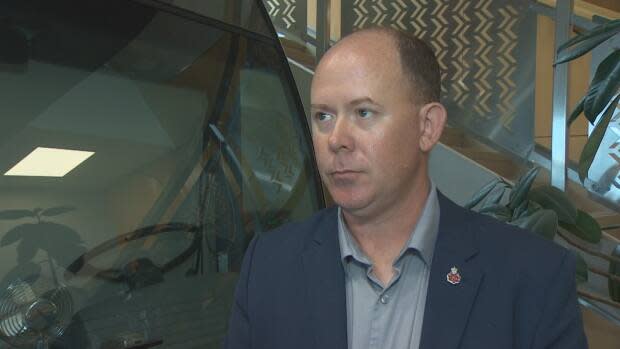Nova Scotia Power wants to increase rates by 11.6% over two years, up from previous forecast

Nova Scotia Power (NSP) says it needs more money from ratepayers to cover skyrocketing fuel costs.
The company is now asking regulators for permission to raise rates by 11.6 per cent between 2022 and 2024, up from the 10 per cent it applied for earlier this year.
On Sept. 3, NSP disclosed its fuel costs are $681 million higher than the May 2021 forecast it used when it applied for the 10 per cent rate hike in late January.
"Since that time, world-wide inflationary pressures and geopolitical events have caused significant cost increases in services and products, including fuel to operate vehicles and fuel to generate electricity," the company said in an update filed with the Nova Scotia Utility and Review Board ahead of public hearings later this month.
Officials say the price of solid fuels used to generate electricity, particularly coal, have gone up along with the cost of natural gas and oil also used in Nova Scotia's power grid. NSP says the increase in solid fuel costs in the first six months of 2022 was $119 million more than originally forecast. Natural gas jumped by $89 million. The cost of wind power has remained flat in 2022 and is forecast to stay that way in 2023.
Fuel costs include the price of fuel it uses to generate electricity, power it buys and penalties it pays for failing to meet provincial greenhouse gas (GHG) reduction targets. And it matters because NSP's fuel bill is automatically passed on to customers, after an annual vetting.
It has asked regulators to defer recovery for higher fuel costs in 2023 and 2024 until at least 2025. The company also said it did not get 2,700 gigawatts of additional market-priced, and cheaper, hydro electricity it had counted on from the Muskrat Falls hydro project in Labrador.
Province won't explain $165M in relief it is giving NSP
The provincial government has offered some help — agreeing to provide relief from greenhouse gas expenses that will shave $165 million from fuel costs in 2022.
"This was a lever we could pull," Tory Rushton, Nova Scotia minister of Natural Resources and Renewables, told CBC News Tuesday.
"Is it credits or is it a financial mark? At the end of the day, what matters is the ratepayers in Nova Scotia.
"We've been through a lot here in Nova Scotia, in the rest of the rest of the country, it's hard on everybody's pocketbooks. So these are levers that we're willing to pull as a government to ensure our ratepayers are protected."

Rushton referred questions about the details to officials, who later declined to clarify how the relief would work.
"We will release details later this fall," Nova Scotia Department of Environment and Climate Change spokesperson Elizabeth MacDonald said in a brief statement.
Temporary reprieve
Nova Scotia Power was clear this is a temporary fix.
"While the GHG Relief assists in making these compliance costs more affordable for customers in the near term, it does not relieve N.S. Power of its ongoing responsibility to meet its emissions targets in the long term," NSP said.
Imposition of a federal carbon tax is looming.
Last week Nova Scotia submitted its proposal asking for control of that tax.
Failing that, Ottawa would impose the "federal backstop program" which Nova Scotia Power said would cost it $116 million in 2023 and $127 million in 2021.

Jennifer O'Connell, parliamentary secretary to Intergovernmental Affairs Minister Dominic LeBlanc, was noncommittal Tuesday when asked about the Nova Scotia proposal.
"It depends. If it meets the federal government's emissions objectives. As in other provinces like B.C. — they have their own carbon pricing model," O'Connell said.
"In provinces where I come from, for example in Ontario, it's the federal backstop and that money is flowed directly from the federal government to residents. So it really depends on if the provinces submit a plan that meets the objectives of the legislation."
MORE TOP STORIES


